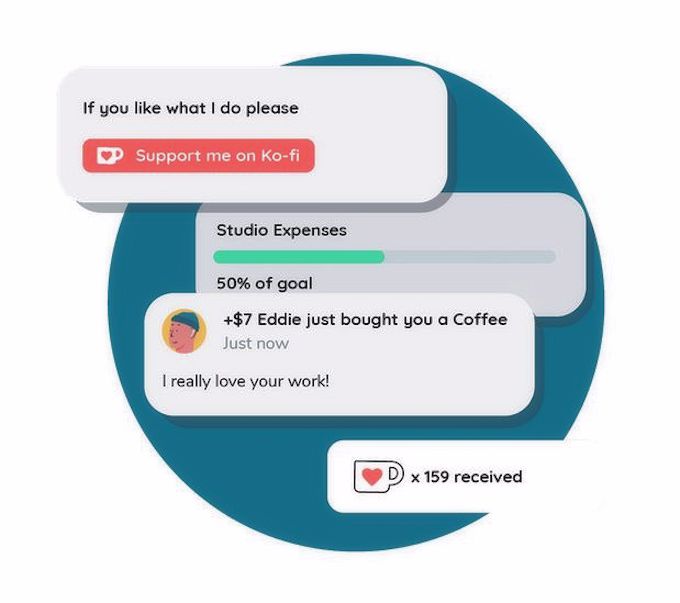
Advertising and Media. We believe, in fact, as the great innovators of the technological and commercial philosophy of the network also maintain, that the world of business in its profound essence is fundamentally human, and that technology without aesthetics does not interest anyone in the long run. The true language of commerce. after all it is the natural conversation between human beings.
Carl William Brown
We don’t have any banner, Flash, animation, obnoxious sound, or popup ad. We do not implement these annoying types of ads! We need money to operate the site, and almost all of it comes from our online advertising. Please add our site to your ad blocking whitelist or disable your adblocking software.
Carl William Brown
Many a small thing has been made large by the right kind of advertising.
Mark Twain
All media exist to invest our lives with artificial perceptions and arbitrary values.
Marshall McLuhan
An advertising agency is 85 percent confusion and 15 percent commission.
Fred Allen
Advertising is the very essence of democracy.
Anton Chekhov
Advertising is the principal reason why the business person has come to inherit the earth.
James R. Adams
Advertising is the art of convincing people to spend money they don’t have for something they don’t need.
Will Rogers
Advertising is the life of trade.
Calvin Coolidge
Promotion is one of the fundamental marketing component. A promotional mix or plan is formed by the following strategic elements, that is: selling, advertising, sales promotion, direct marketing, and publicity. A promotional mix specifies how much attention to pay to each of the five subcategories, and how much money to budget for each.
Carl William Brown

Let advertisers spend the same amount of money improving their product that they do on advertising and they wouldn’t have to advertise it.
Will Rogers
Advertising is legalized lying.
H. G. Wells
Advertising, personal (face-to-face) selling, and sales promotion are the methods for inducing people to buy.
The primary objective of advertising is to sell in advance the product, that is, to convince consumers to purchase an item before they actually see and inspect it. Most companies consider this function so important that they have allotted extensive budgets and engaged special advertising agencies to develop their program of advertising. By repeatedly exposing the consumer to a brand name or trademark, to the appearance or package of a product, and to special features of an item, advertisers hope to incline consumers toward a particular product.
Advertising is an audio or visual form of marketing communication that employs an openly sponsored, nonpersonal message to promote or sell a product, service or idea. Sponsors of advertising are often businesses who wish to promote their products or services. Advertising is differentiated from public relations in that an advertiser usually pays for and has control over the message. It is differentiated from personal selling in that the message is non-personal, i.e., not directed to a particular individual.
Advertising is communicated through various mass media, including old media such as newspapers, magazines, Television, Radio, outdoor advertising or direct mail; or new media such as search results, blogs, websites or text messages. The actual presentation of the message in a medium is referred to as an advertisement or “ad”. Advertising is most frequently done on television, radio, and billboards; in newspapers, magazines, and catalogs; and through direct mail to the consumers. In recent years, advertising agencies have been joining forces to become giant agencies, making it possible for them to offer their clients a comprehensive range of worldwide promotion services.

Commercial ads often seek to generate increased consumption of their products or services through “branding,” which associates a product name or image with certain qualities in the minds of consumers. On the other hand, ads that intend to elicit an immediate sale are known as direct response advertising. Non-commercial advertisers who spend money to advertise items other than a consumer product or service include political parties, interest groups, religious organizations and governmental agencies. Non-profit organizations may use free modes of persuasion, such as a public service announcement. Advertising may also be used to reassure employees or shareholders that a company is viable or successful.
As the costs of personal selling have risen, the utilization of salespeople has changed. Simple transactions are completed by clerks. Sales people are now used primarily where the products are complex and require careful explanation or customized application. For example, in the typical automobile sale, the salesperson’s activities generally center on negotiating price and arranging terms of payment; the actual product has usually already been presold through advertising. Sales promotion is one of the five aspects of the promotional mix. (The other 4 parts of the promotional mix are advertising, personal selling, direct marketing and publicity/public relations.)
Media and non-media marketing communication are employed for a pre-determined, limited time to increase consumer demand, stimulate market demand or improve product availability. Examples include contests, coupons, freebies, loss leaders, point of purchase displays, premiums, prizes, product samples, and rebates. Sales promotions can be directed at either the customer, sales staff, or distribution channel members (such as retailers). Sales promotions targeted at the consumer are called consumer sales promotions. Sales promotions targeted at retailers and wholesale are called trade sales promotions. Some sale promotions, particularly ones with unusual methods, are considered gimmicks by many.
(Promotional paragraph. Create your Ko-fi page and start accepting donations in just 60 seconds. Grow your income by opening your free Ko-fi Shop, offering subscriptions or selling commissions and services. Do it all from your single, beautiful Ko-fi page.)
Sales promotion includes several communications activities that attempt to provide added value or incentives to consumers, wholesalers, retailers, or other organizational customers to stimulate immediate sales. These efforts can attempt to stimulate product interest, trial, or purchase. Examples of devices used in sales promotion include coupons, samples, premiums, point-of-purchase (POP) displays, contests, rebates, and sweepstakes.

The purpose of sales promotion is to supplement and coordinate advertising and personal selling; this has become increasingly important in marketing. Often it is necessary to work closely with the dealers who handle a manufacturer’s products if the products are to move satisfactorily.
Displays must be supplied and set up, and cooperative advertising programs may be worked out. Store clerks should be trained in a knowledge of the manufacturer’s products. Often the manufacturer must provide services such as installation and maintenance for a specified time period.
On the consumer level, sales promotion may involve special inducements such as discount coupons, contests, a premium with the purchase of a product, or a lower price on the purchase of a second item. In the broadest sense, merchandising is any practice which contributes to the sale of products to a retail consumer. At a retail in-store level, merchandising refers to the variety of products available for sale and the display of those products in such a way that it stimulates interest and entices customers to make a purchase.
In retail commerce, visual display merchandising means merchandise sales using product design, selection, packaging, pricing, and display that stimulates consumers to spend more. This includes disciplines and discounting, physical presentation of products and displays, and the decisions about which products should be presented to which customers at what time. Merchandising helps to understand the ordinary dating notation for the terms of payment of an invoice.
Codified discounting solves pricing problems including markups and markdowns. It helps to find the net price of an item after single or multiple trade discounts and can calculate a single discount rate that is equivalent to a series of multiple discounts. Further, it helps to calculate the amount of cash discount for which a payment qualifies.
Find out more about these topics at these pages :
Universal Marketing Dictionary
